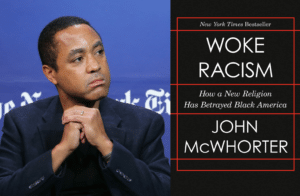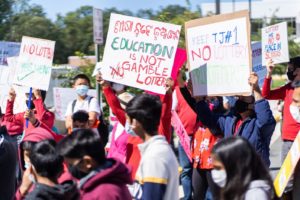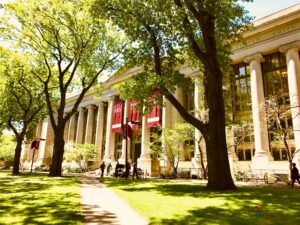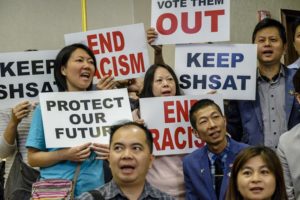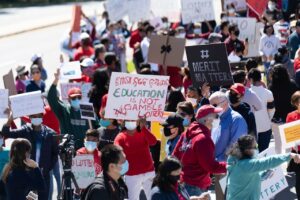The time has come to end discrimination in public education

Right now, the Supreme Court has given the government the opportunity to weigh in on a case in which Asian-American applicants allege discrimination by Harvard’s Admissions Committee. Another suit, alleging anti-Asian discrimination at Yale, has been filed in federal district court.
Some selective high schools have also revamped their admissions procedures in ways that appear calculated to lower the numbers of Asian-Americans in their entering classes.
In one PLF case, Coalition for TJ v. Brabrand, Judge Claude Hilton said in a ruling from the bench, “Everybody knows the policy [at the northern Virginia magnet Thomas Jefferson High School] is not race neutral, and that it’s designed to affect the racial composition of the school.”
Is this issue simply a bolt from the blue? Or has there been a long history of discrimination against Asian-Americans in education?
The recent cases reflect a mix of old and new issues. Bias and discrimination against Asian-Americans, in education and outside of it, have a long and sordid history in this country. Perhaps the most infamous example is the 1927 Supreme Court case Gong Lum v. Rice, in which Martha Lum, a nine-year-old girl of Chinese-American background, brought suit against Mississippi to be able to attend school with white children.
Gong Lum was about classification. At the time, Mississippi operated a dual system of segregated schools for white and Black children. Lum and other Asian-Americans didn’t fit clearly into either category, so Lum tried to attend a school designated for white children. Mississippi claimed that Asian-American children should instead be required to attend the “colored” school. The Supreme Court held that Lum had no equal protection right to attend the school of her choice.
Although dual systems like Mississippi’s have been recognized as unconstitutional for decades, it also raises the question: Where do Asian-Americans fit? But the real issue at the heart of the Mississippi case remains central to today’s controversies about anti-Asian educational discrimination.
This old question has new salience because the United States’ Asian-American population has grown dramatically in recent years. A brief filed in SFFA v. Harvard notes a rise of 67% since the landmark Grutter v. Bollinger race preferences decision in 2003 and 600% since its 1978 predecessor Bakke v. Regents of California.
A variety of indicators show Asian-Americans tend to be disproportionately high academic achievers, although the root causes of this remain hotly debated. As their numbers in the general population grew in the 1980s, the numbers of Asian-Americans applying to highly selective colleges shot up.
Some admissions officers had visceral negative reactions to what they perceived as the potential for racial transformation of their campuses.
In 1985, The Washington Post recounted the following anecdote about a Princeton admissions committee: “We were going over the applicant list and we came to a clearly qualified Asian-American student. And one committee member said, ‘We have enough of them.’ And someone else turned to me and said, ‘You have to admit, there are a lot.’”
Observers have noted that the story of prejudice against Asian-Americans at elite schools strikingly resembles the story of anti-Semitic bias at these same institutions a century or so earlier.
The 1910s and 1920s saw a sharp rise in applications from hardworking and academically accomplished Jewish students, many from poor and immigrant backgrounds. These students were perceived as lacking in polish and personal qualities compared to their wealthy WASP peers, although—especially seen from the distance of decades—this perception appears little more than a veneer for rank racial and ethnic prejudice.
In 1922, Harvard put into place a “holistic” system that allegedly better assessed traits like “leadership skills” and “character” but in practice operated to ensure that Harvard’s student body was never more than about 15% Jewish.
In the 1980s, some elite schools hid behind holistic admissions procedures to maintain similar-looking ceilings on the numbers of Asian-Americans admitted. In 1988, the U.S. Department of Education’s Office for Civil Rights (OCR) opened investigations at Harvard and UCLA. OCR’s ultimate findings blamed legacy and athletic preferences, not intentional discrimination, for Asian-Americans’ disproportionately low admissions rates. But the OCR report reproduced some comments made about Asian-Americans’ applications –“…e.g., [applicant’s] scores and application seem so typical of other Asian applications I’ve read: extraordinarily gifted in math with the opposite extreme in English”—that nonetheless indicated stereotyping and bias at work.
The surging numbers of Asian-Americans in the general population have made such de facto ceilings less and less politically tenable. In California, Asian-American volunteers were strong voices against the failed Prop 16, which would have legalized government race preferences. Their main motivator was concerns about harm from race preferences intended to benefit other groups.
Although sometimes the debate about race preferences in admissions is framed as a conflict between historically advantaged whites versus historically disadvantaged African-Americans, the burden of race-conscious admissions falls largely on Asian-Americans.
A 2005 study by two Princeton researchers found that if race admissions preferences were eliminated, “nearly four out of every five places … not taken by African-American and Hispanic students would be filled by Asians.” It is ironic that so many students displaced by race preferences belong to a group that has historically suffered from significant race discrimination.
A bedrock principle of American constitutional law holds that individuals should be treated as individuals and not merely as representatives of their racial group. Individuals of Asian descent have suffered for too long because of politically expedient departures from this core principle. The courts hearing the college and magnet schools cases should vindicate their rights and bring to a close this new era of educational discrimination.






